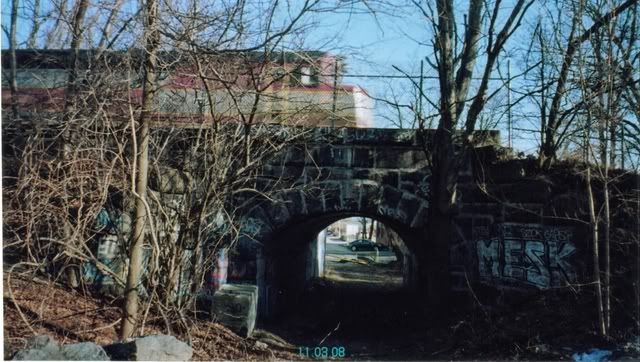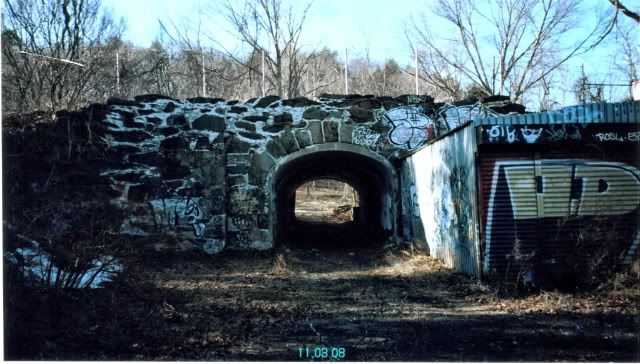Back in the days when trains were made out of wood, you could have really close stops, because lighter trains meant higher acceleration. On the Boston & Providence, there were stops approximately where each of the Orange Line stations is now. On the Boston & Worcester there were stations every mile inside the (now) 128 belt).
What we now know as the Needham Line is a comglomeration of two separate railroads. Built in 1850, the B&P's Dedham Branch (loop) (later New York & New England) split at Forest Hills, ran through West Roxbury to Temple Street, then turned south over a now-abandoned ROW, then turned east at Dedham and returned to the mainline (via an 1834 branch) at Readville. The Norfolk County later built a branch (now the Route 1 ROW) from Dedham to Islington to connect to their own railroad.
Meanwhile, the Charles River Railroad was built from the B&A (ex-B&W)'s Brookline Branch (now the D line) to Newton Upper Falls in 1850 and to Needham in 1852. (Most of the gravel that they filled in the Back Bay area with was hauled from Needham over the CRR.) The NY&B later extended it southwest to Woonsocket and sold out to the NY&NE. The B&A bought the line to Cook Street Junction (just east of Eliot) in 1883 and extended to Highland Branch to Riverside as a loop service. In 1906, the NY&NE built the stretch from Needham Junction to West Roxbury so they could run their trains in on their West Roxbury Branch rather than over the B&A. I believe that ended passenger service over the Cook Street Junction, but I cannot say for sure.
So, only in 1906 do we see the beginning of the modern service pattern: Needham, via Back Bay, Forest Hills, West Roxbury, and Needham Junction. Even then, though, most trains turned southwest at Needham Junction. Service that direction was discontinued in 1967. The Newton Upper Falls branch was used for industry until relatively recently, and rails are in place up to just a short distance from the D Line. The lines were disconnected at Cook Street Junction at least as early as 1946, although I believe a siding there may have been used by the MTA during construction in 1958-59 or even later.
So, short answers: old lightweight wooden trains, yes, and probably 1906 for passenger service.

